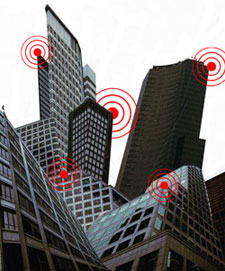How to assess impact when the assessment takes longer than the lifetime of the thing to be assessed?
 Today an article in De Standaard (link leads to article in Dutch) voices the worry of scientists that public wifi networks in cities will expose millions of people to radiation of which the long-term consequences for the human body have not yet been studied adequately.
Today an article in De Standaard (link leads to article in Dutch) voices the worry of scientists that public wifi networks in cities will expose millions of people to radiation of which the long-term consequences for the human body have not yet been studied adequately.
The same has been said already many times about the cellular phone networks, but as long as it can’t be proven to be harmful, there is no real way to stop or delay the introduction.
Even if they start serious studies now, the time needed to accumulate enough evidence just doesn’t make sense compared to the lifetime of these technologies. For instance, it took many decades to accumulate enough data to show the relation between smoking and lung cancer in such a way that the facts basically couldn’t be disputed. Most studies nowadays are done so hastily that they at best show a minuscule bias one way or the other, with a near identical study often showing a comparable tiny bias the other way. And in the end nothing gets proven conclusively.
Do we really believe that say in 10 years from now we will still be using anything comparable to the current wifi networks to connect to the internet? I’m sure none of us could even speculate how the Internet will look like in 10 years…
Now, I’m not advocating the, “just go ahead and damned the consequences” approach, but what do you do in the cases where assessing the consequences would either mean seriously restricting progress, maybe even reducing it to a crawl, or where the assessment itself will be more or less meaningless due to the simple fact that the thing to be assessed will be many, many changes and iterations down the line making the assessment irrelevant?
I don’t have the answer…
Actually, the world health organization has been studying the effects of electro-magnetic fields on human health since 1996 and hasn’t found conclusive evidence that it – in the frequency range from 0 – 300 Ghz – is harmfull. Even then the radiation scare was allready in full swing. The health protection agency likewise has done studies specifically on wireless data transmission. their conclusion was also: not a risk, except in very very close proximity to an access point. So none at all for the common user in the streets.